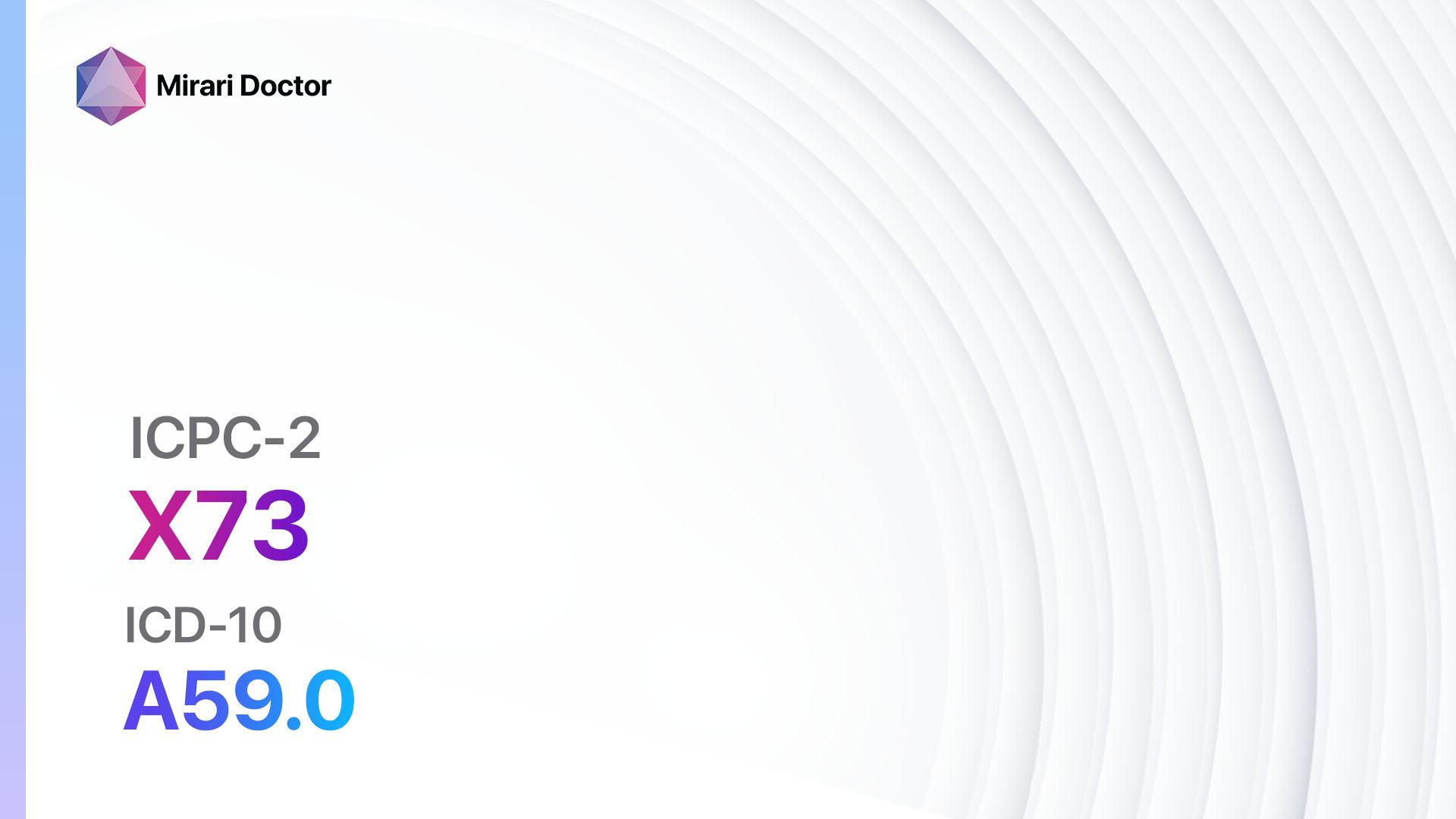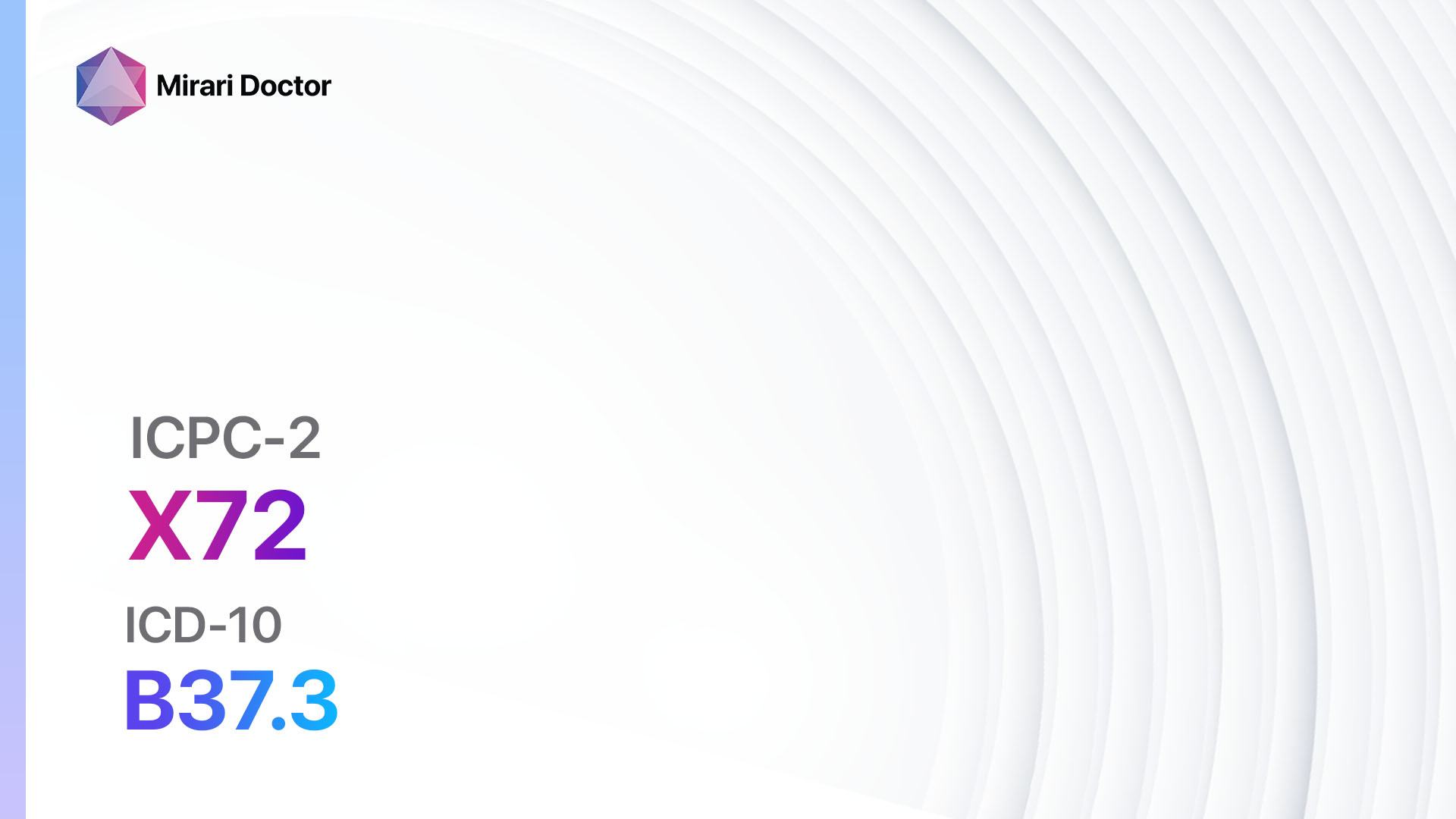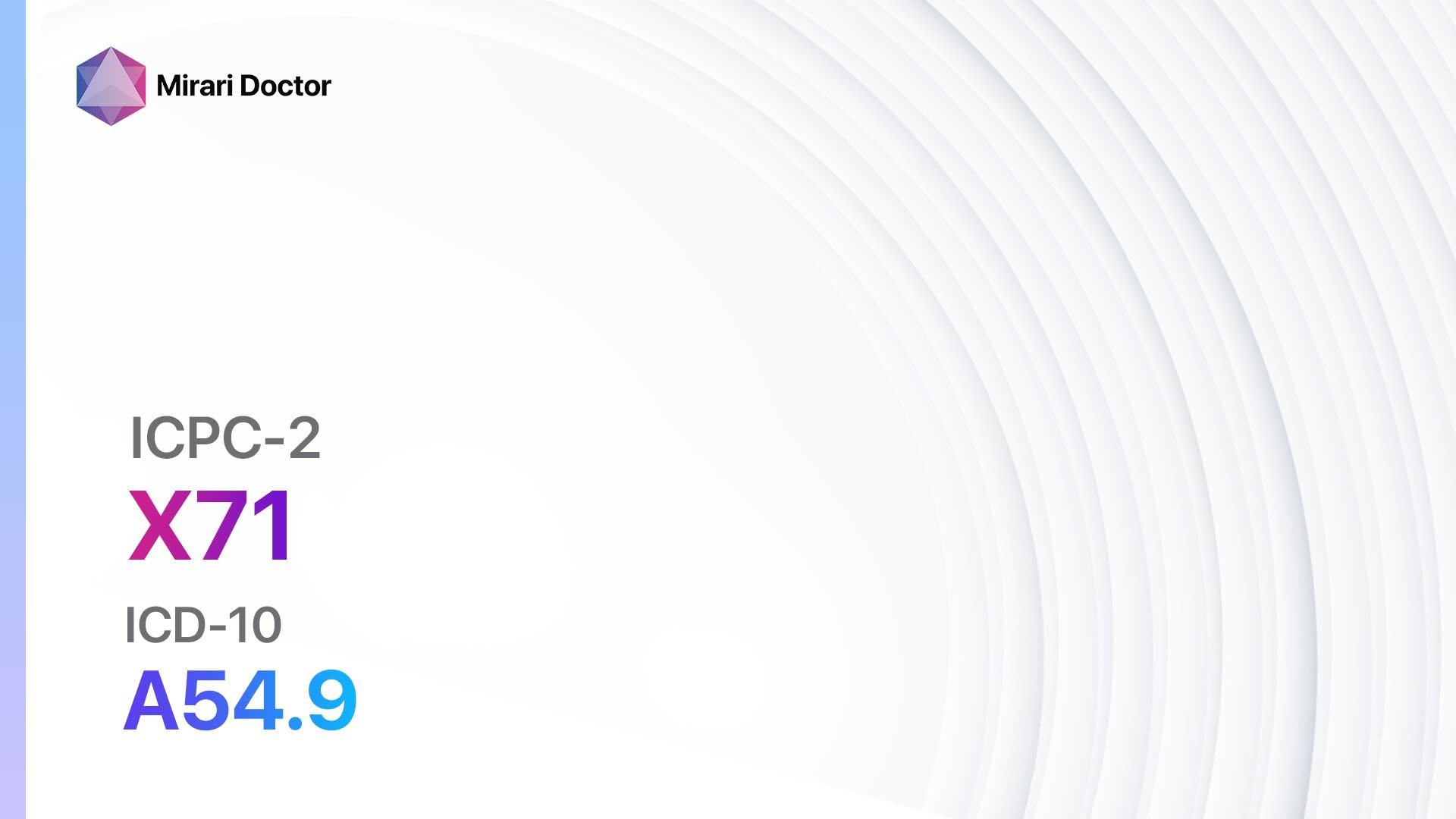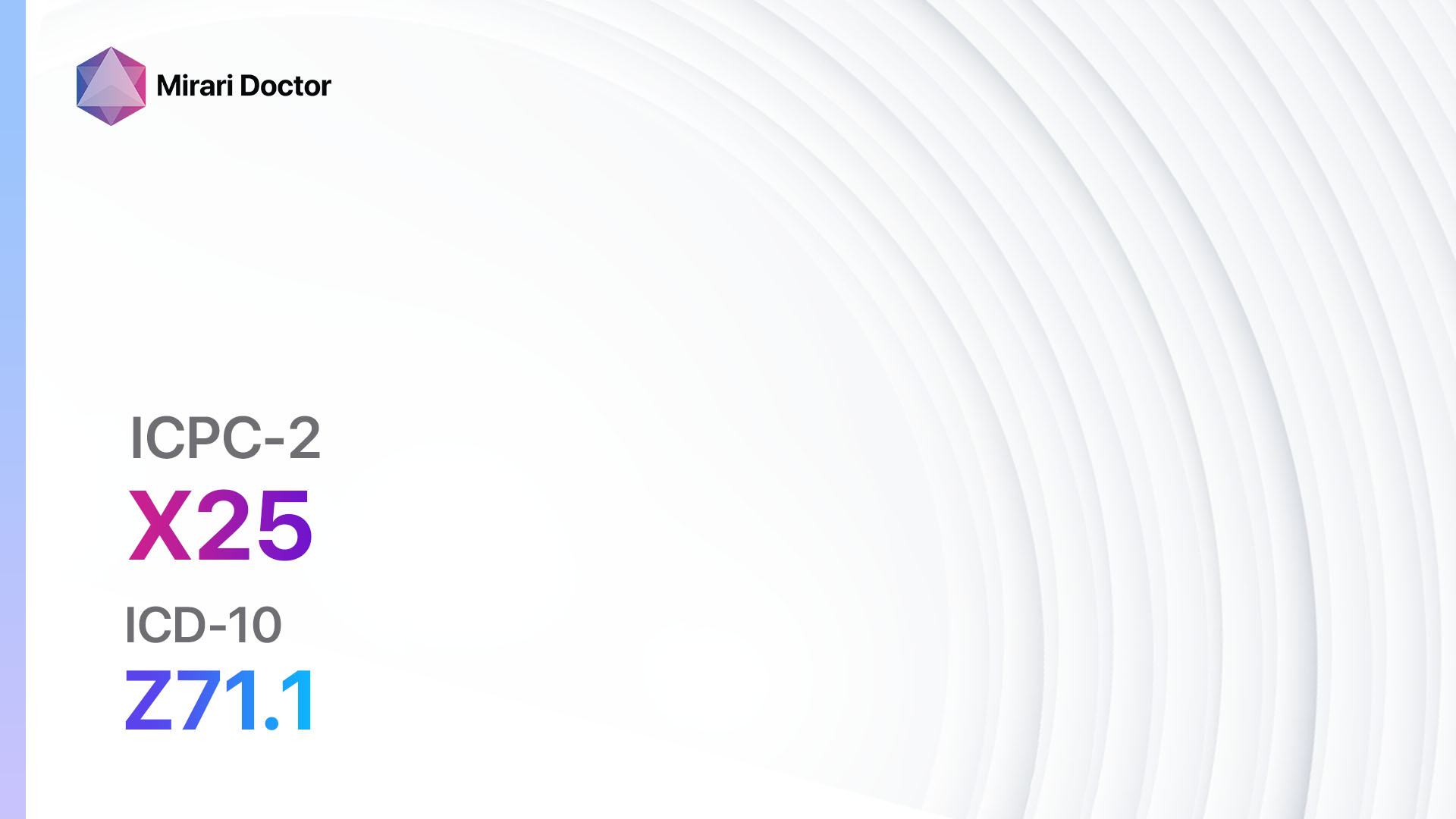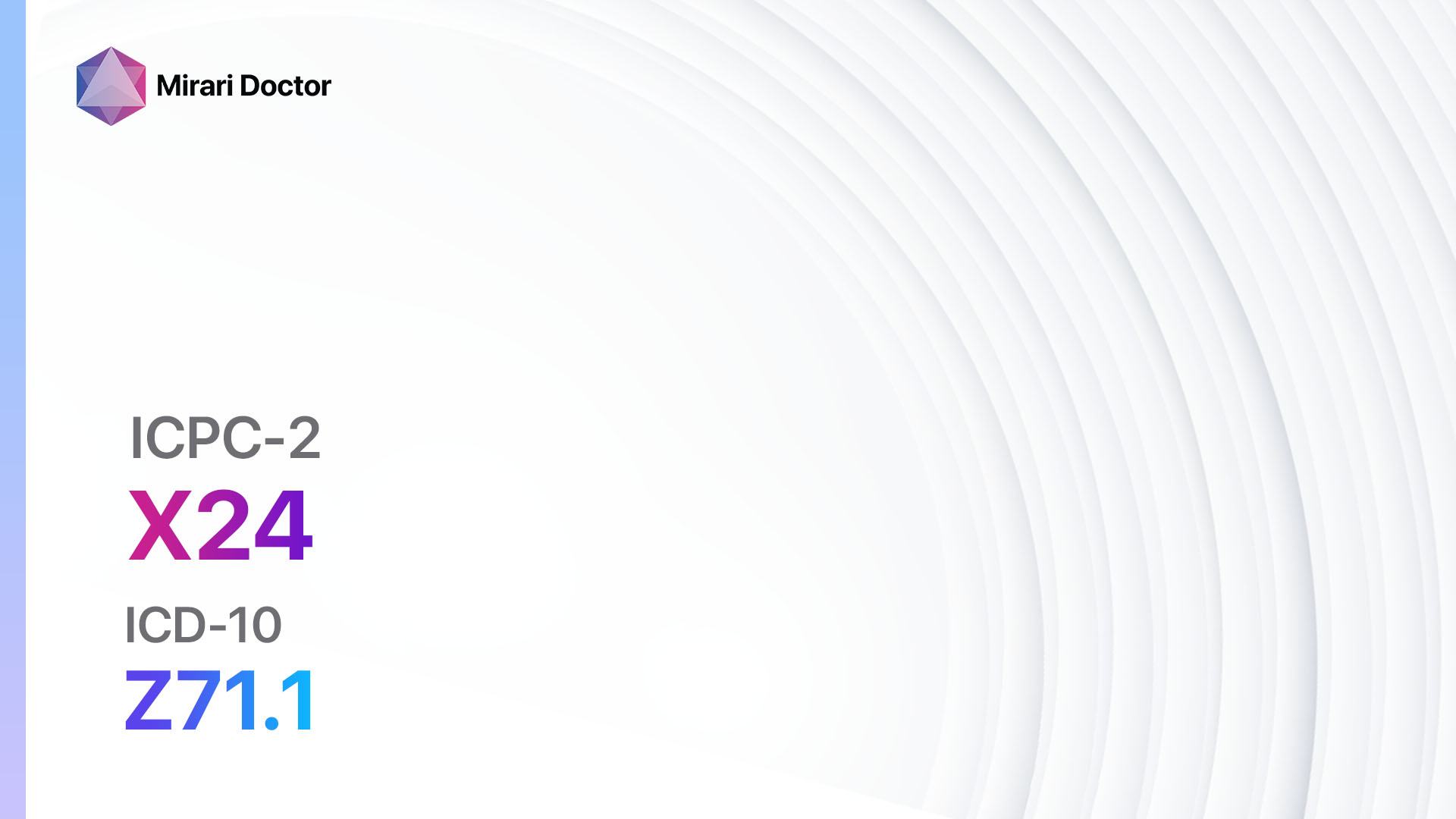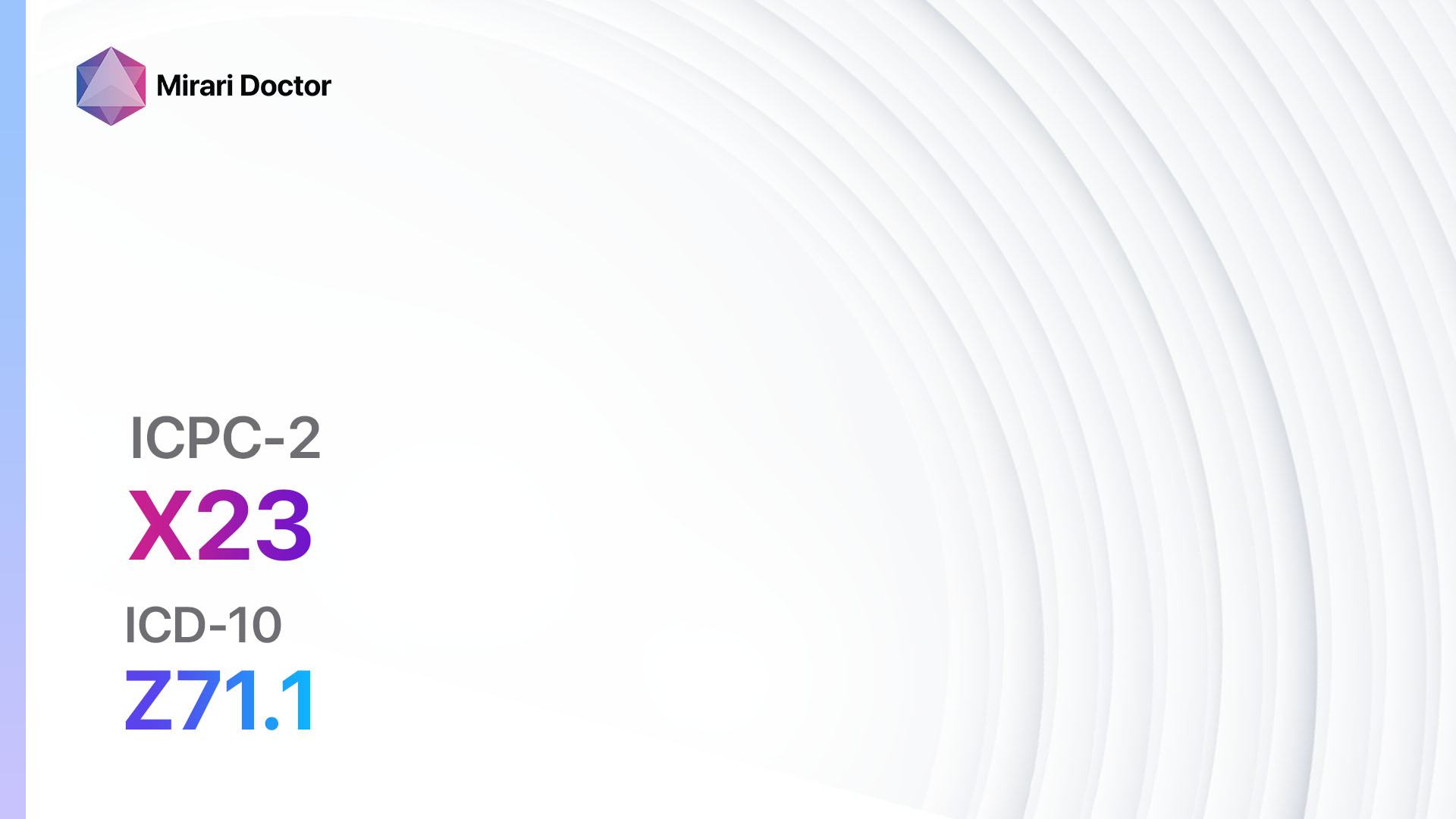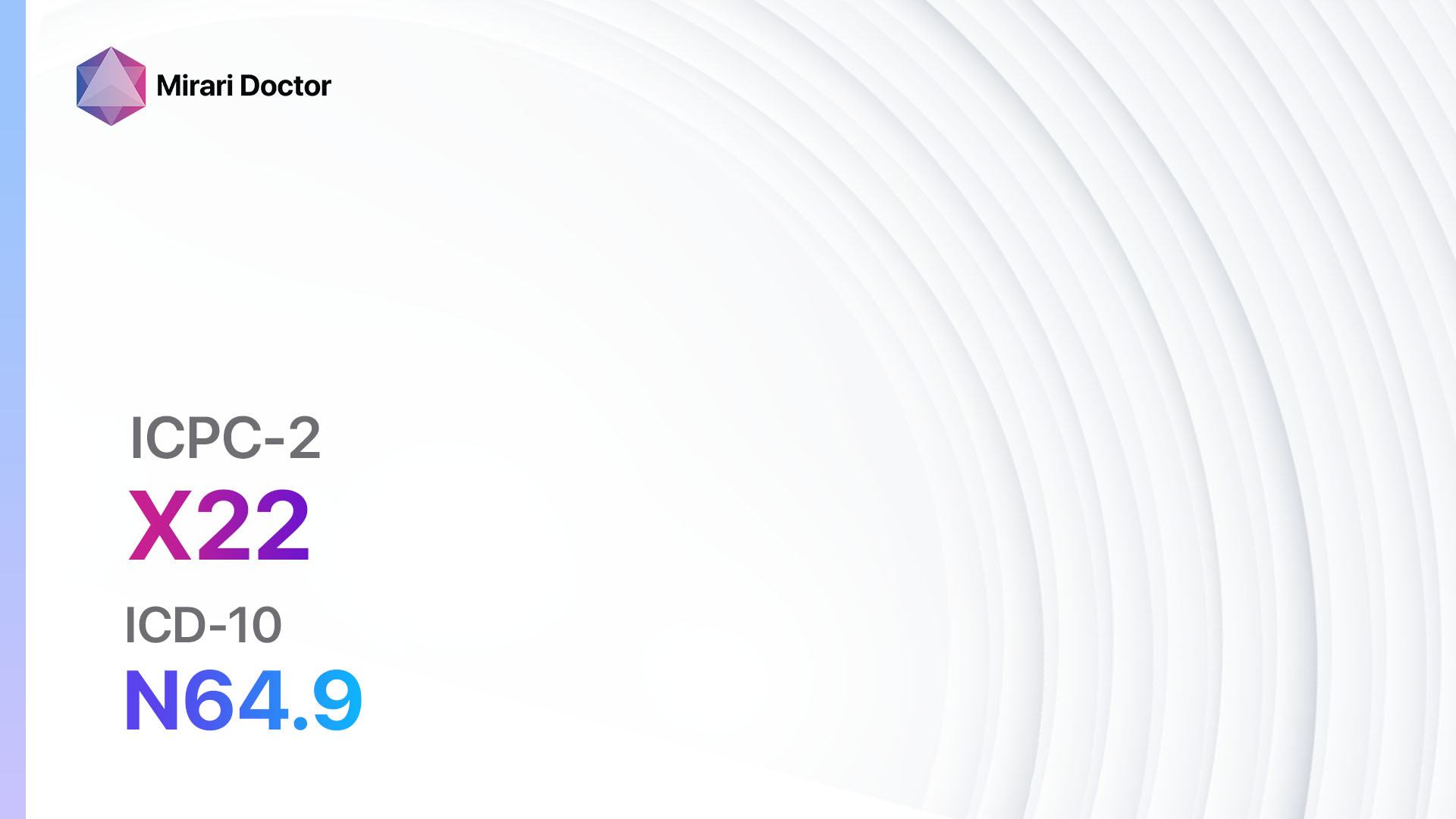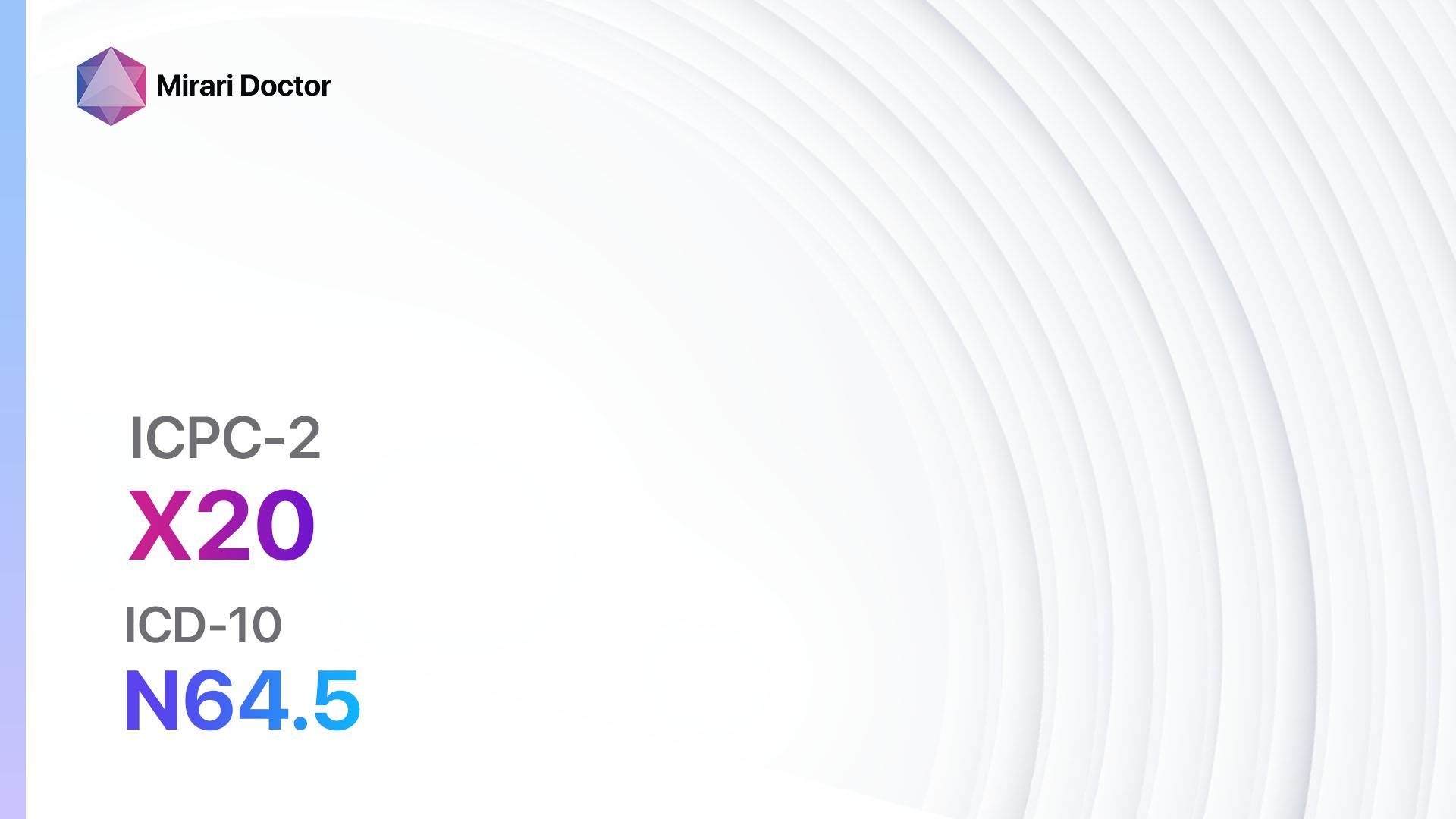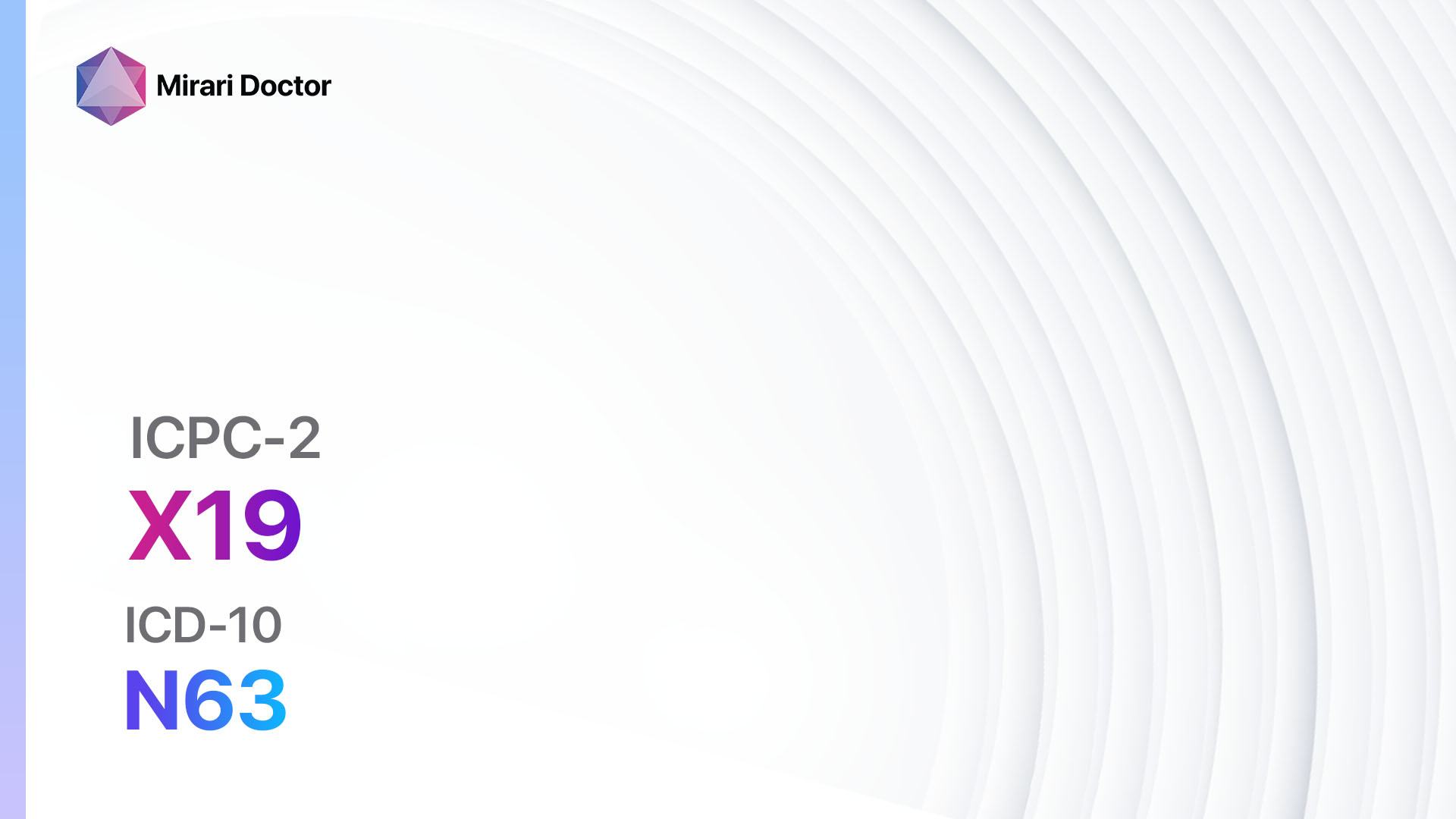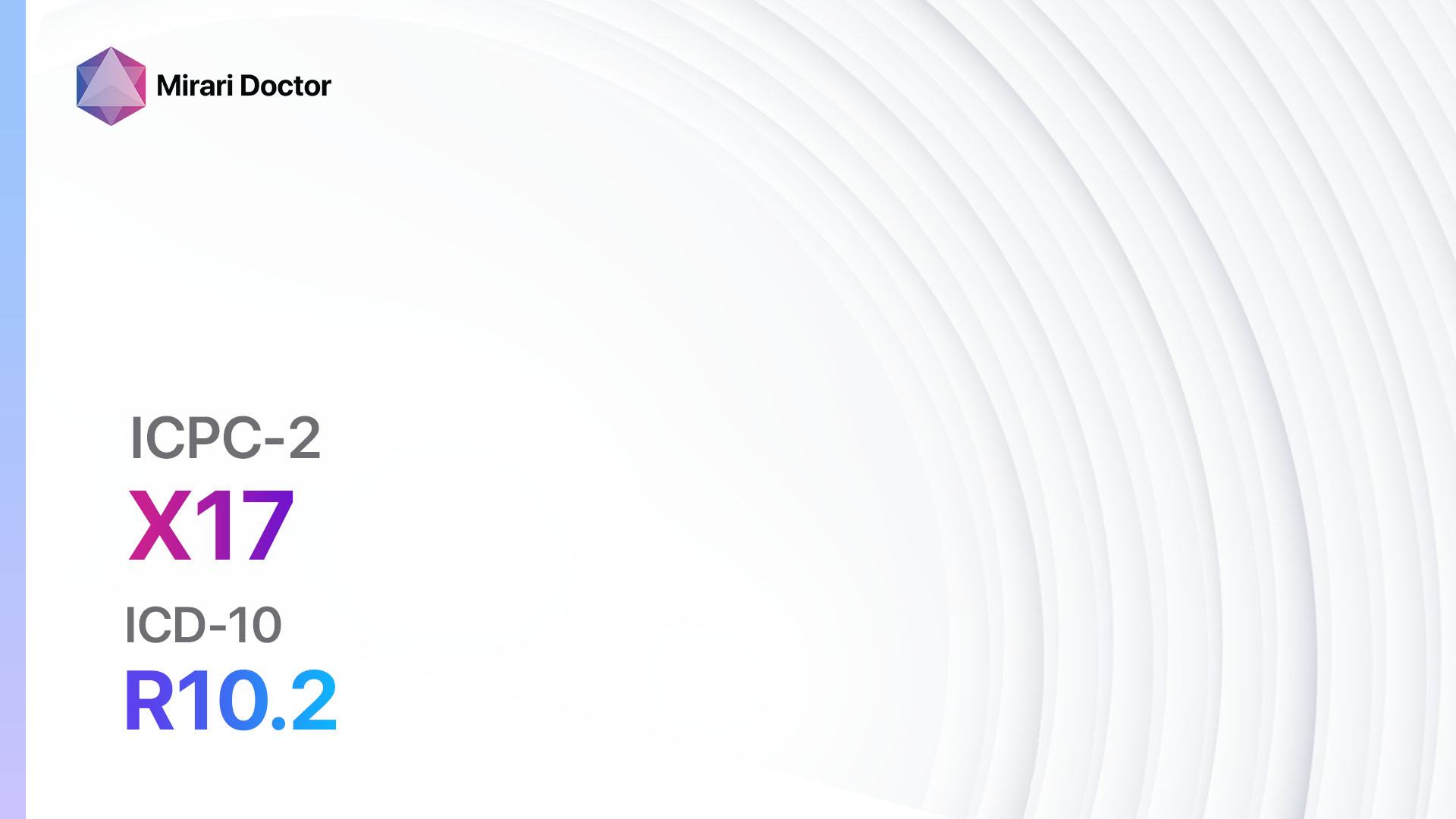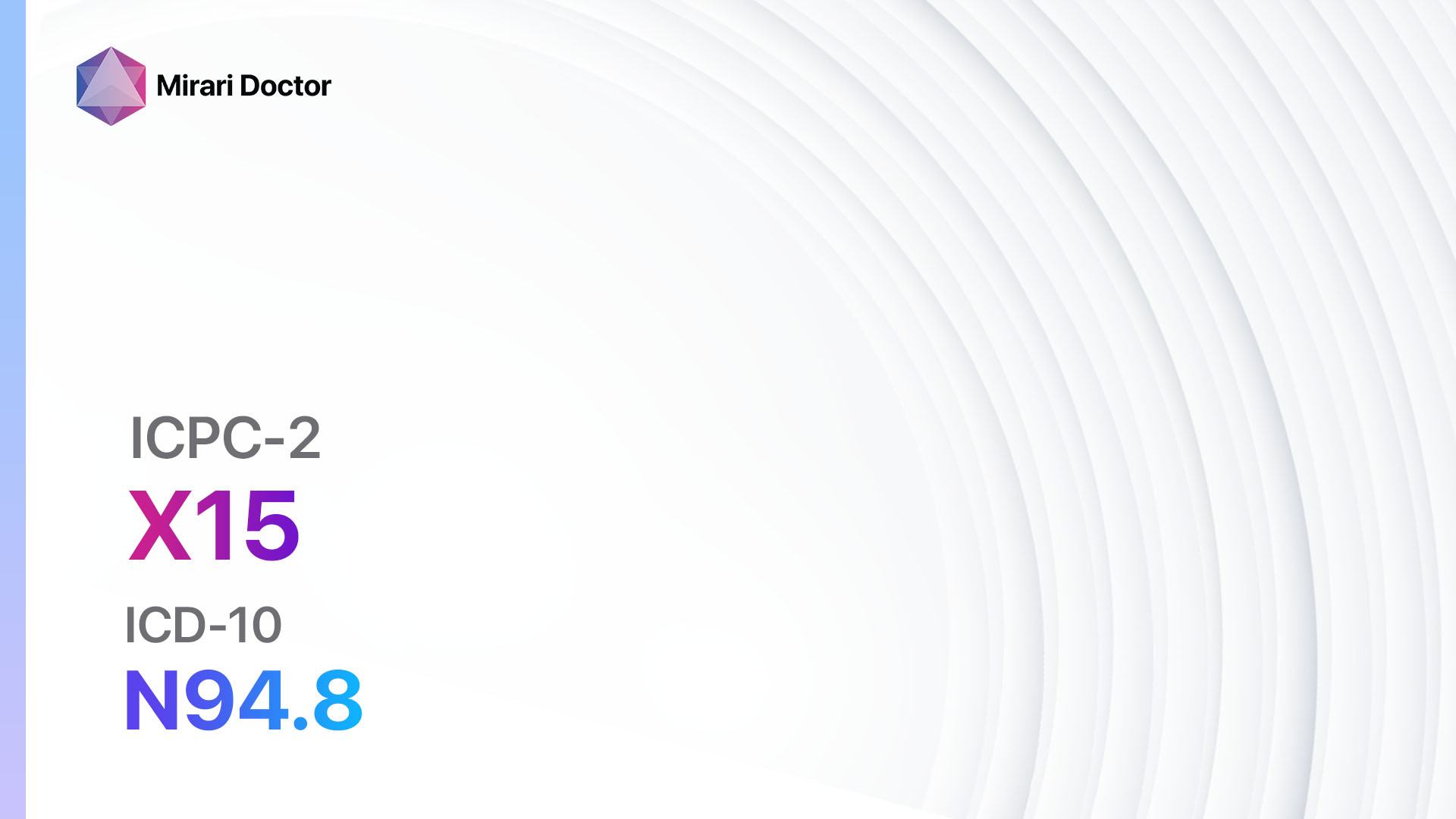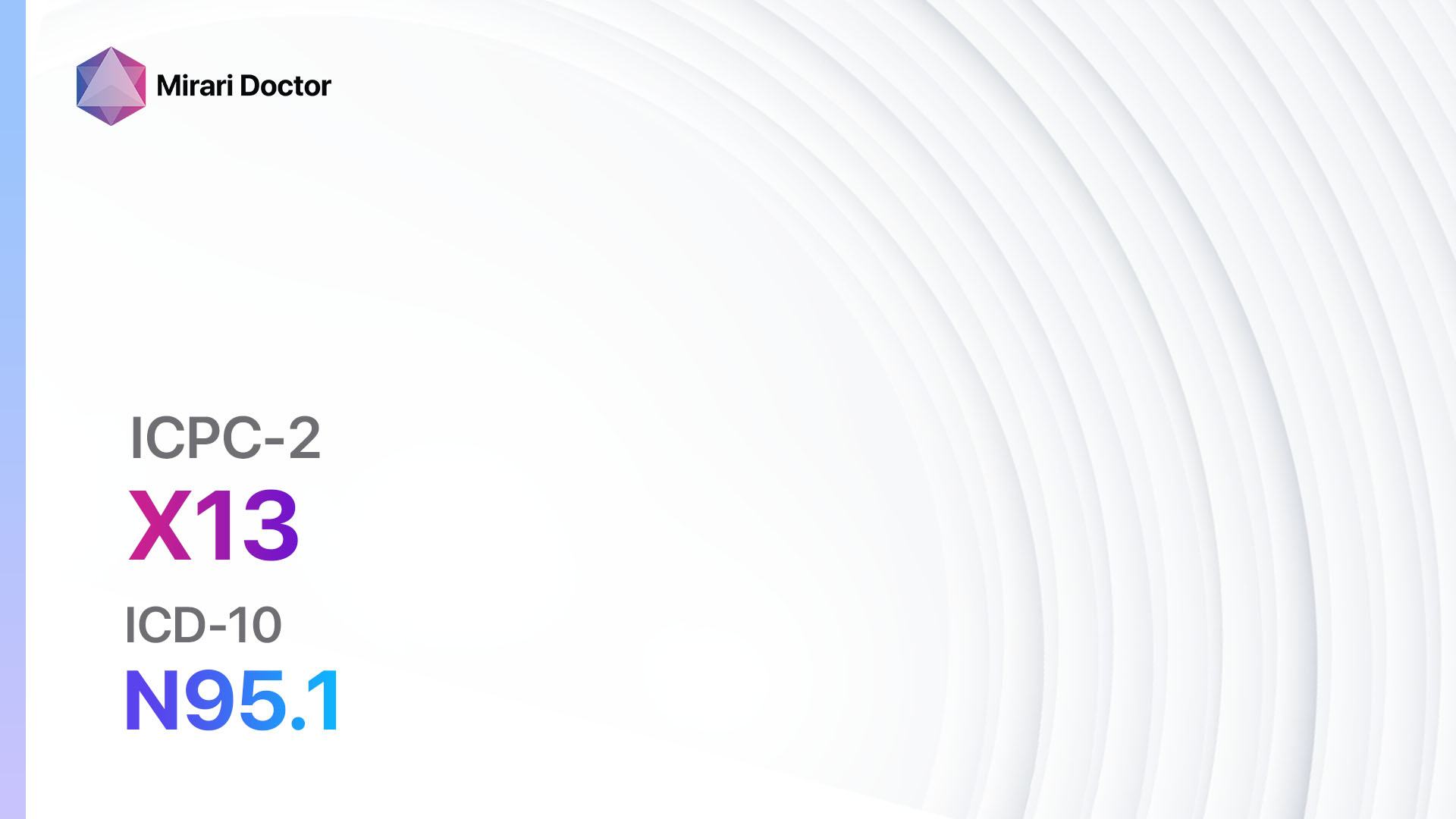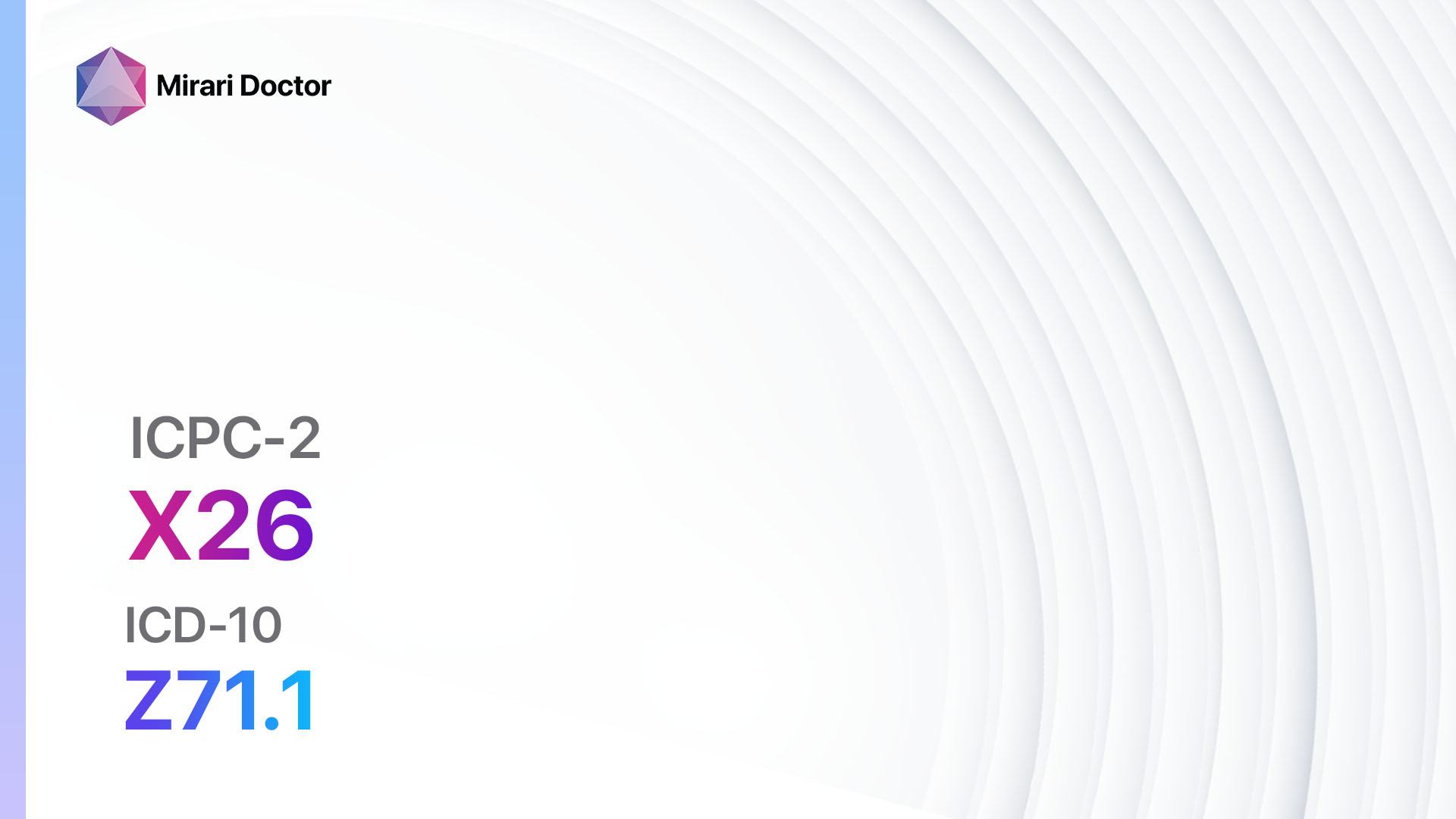
Introduction
Fear of breast cancer is a common concern among women and can significantly impact their emotional well-being and quality of life[1][2]. This guide aims to provide a comprehensive overview of the condition, including its symptoms, causes, diagnostic steps, possible interventions, and lifestyle interventions[3]. By understanding the condition and available options, healthcare professionals can effectively address the fear of breast cancer in female patients[4].
Codes
- ICPC-2 Code: X26 Fear of breast cancer female[5]
- ICD-10 Code: Z71.1 Person with feared complaint in whom no diagnosis is made[6]
Symptoms
- Persistent worry or anxiety about developing breast cancer[7]
- Frequent checking of breasts for lumps or changes[8]
- Avoidance of activities or situations that may increase the risk of breast cancer[9]
- Difficulty sleeping or concentrating due to fear of breast cancer[10]
- Physical symptoms such as palpitations, sweating, or shortness of breath when thinking about breast cancer
Causes
- Family history of breast cancer
- Personal history of breast abnormalities or previous breast cancer
- Exposure to radiation therapy at a young age
- Genetic mutations, such as BRCA1 and BRCA2
- Hormonal factors, such as early onset of menstruation or late menopause
- Lifestyle factors, such as obesity, alcohol consumption, and lack of physical activity
Diagnostic Steps
Medical History
- Gather information about the patient’s family history of breast cancer
- Assess personal history of breast abnormalities or previous breast cancer
- Inquire about exposure to radiation therapy or genetic mutations
- Evaluate hormonal factors and lifestyle habits
Physical Examination
- Perform a thorough breast examination to check for any lumps, changes, or abnormalities
- Assess lymph nodes in the armpit area for any swelling or tenderness
- Examine the breasts for any signs of skin changes, nipple discharge, or dimpling
Laboratory Tests
- Breast cancer screening tests, such as mammography, may be recommended based on age and risk factors
- Blood tests to assess hormone levels, genetic mutations, or tumor markers
- Biopsy of any suspicious breast tissue for further evaluation
Diagnostic Imaging
- Mammography: X-ray imaging of the breasts to detect any abnormalities or tumors
- Ultrasound: Use of sound waves to create images of the breast tissue
- Magnetic Resonance Imaging (MRI): Detailed imaging of the breast tissue using magnetic fields and radio waves
- Breast MRI with contrast: Injection of a contrast agent to enhance the visibility of any abnormalities
Other Tests
- Genetic testing for BRCA1 and BRCA2 mutations in high-risk individuals
- Ductal lavage or nipple aspiration to collect cells from the breast ducts for analysis
- Breast biopsy, such as fine-needle aspiration or core needle biopsy, to obtain tissue samples for further evaluation
Follow-up and Patient Education
- Provide counseling and support to address the patient’s fear of breast cancer
- Educate the patient about breast cancer risk factors, prevention strategies, and early detection methods
- Encourage regular breast self-examinations and routine mammograms based on age and risk factors
- Schedule regular follow-up appointments to monitor any changes or concerns
Possible Interventions
Traditional Interventions
Medications:
Top 5 drugs for Fear of breast cancer:
- Selective Serotonin Reuptake Inhibitors (SSRIs) (e.g., Fluoxetine, Sertraline, Paroxetine):
- Cost: Generic versions can be $3-$50/month.
- Contraindications: Hypersensitivity to SSRIs, concurrent use of MAO inhibitors.
- Side effects: Nausea, headache, insomnia.
- Severe side effects: Serotonin syndrome, suicidal thoughts.
- Drug interactions: MAO inhibitors, NSAIDs, other antidepressants.
- Warning: Increased risk of suicidal thoughts in young adults.
- Benzodiazepines (e.g., Alprazolam, Lorazepam, Diazepam):
- Cost: Generic versions can be $4-$50/month.
- Contraindications: Glaucoma, respiratory depression, pregnancy.
- Side effects: Drowsiness, dizziness, confusion.
- Severe side effects: Respiratory depression, dependence.
- Drug interactions: Alcohol, opioids, other sedatives.
- Warning: Risk of dependence and withdrawal symptoms.
- Beta-Blockers (e.g., Propranolol, Atenolol, Metoprolol):
- Cost: Generic versions can be $4-$30/month.
- Contraindications: Severe bradycardia, heart failure, asthma.
- Side effects: Fatigue, dizziness, cold hands and feet.
- Severe side effects: Heart block, bronchospasm.
- Drug interactions: Calcium channel blockers, insulin.
- Warning: Should not be abruptly stopped.
- Antidepressants (e.g., Venlafaxine, Duloxetine, Amitriptyline):
- Cost: Generic versions can be $4-$50/month.
- Contraindications: Hypersensitivity to antidepressants, concurrent use of MAO inhibitors.
- Side effects: Nausea, dry mouth, drowsiness.
- Severe side effects: Serotonin syndrome, suicidal thoughts.
- Drug interactions: MAO inhibitors, NSAIDs, other antidepressants.
- Warning: Increased risk of suicidal thoughts in young adults.
- Anxiolytics (e.g., Buspirone, Hydroxyzine):
- Cost: Generic versions can be $4-$30/month.
- Contraindications: Hypersensitivity to anxiolytics, pregnancy.
- Side effects: Drowsiness, dizziness, headache.
- Severe side effects: Seizures, allergic reactions.
- Drug interactions: Alcohol, opioids, other sedatives.
- Warning: Risk of dependence and withdrawal symptoms.
Alternative Drugs:
- Cognitive Behavioral Therapy (CBT): A form of psychotherapy that helps individuals identify and change negative thought patterns and behaviors associated with fear of breast cancer. Cost: Varies depending on the therapist and location.
- Support Groups: Joining support groups can provide emotional support and a sense of community for individuals with fear of breast cancer. Cost: Varies depending on the organization or group.
Surgical Procedures:
- Prophylactic mastectomy: Surgical removal of one or both breasts to reduce the risk of developing breast cancer. Cost: $10,000 to $20,000.
- Breast reconstruction: Surgical procedures to restore the shape and appearance of the breasts after mastectomy. Cost: $5,000 to $15,000.
Alternative Interventions
- Mindfulness-Based Stress Reduction (MBSR): A meditation-based program that helps individuals manage stress and anxiety related to fear of breast cancer. Cost: $200-$500 for an 8-week program.
- Yoga: Practicing yoga can help reduce anxiety and improve overall well-being. Cost: $10-$20 per class or $50-$150 for a monthly membership.
- Art Therapy: Engaging in art therapy can provide a creative outlet for expressing emotions and reducing anxiety. Cost: $50-$100 per session.
- Journaling: Writing in a journal can help individuals process their fears and emotions related to breast cancer. Cost: Minimal, only requires a journal or notebook.
- Supportive Counseling: Individual or group counseling sessions can provide emotional support and guidance for managing fear of breast cancer. Cost: Varies depending on the therapist and location.
Lifestyle Interventions
- Regular exercise: Engaging in physical activity can help reduce anxiety and improve overall well-being. Cost: Varies depending on the type of exercise (e.g., gym membership, fitness classes).
- Healthy diet: Consuming a balanced diet rich in fruits, vegetables, whole grains, and lean proteins can support overall health and well-being. Cost: Varies depending on individual food choices and preferences.
- Stress management techniques: Practicing stress management techniques such as deep breathing, meditation, or relaxation exercises can help reduce anxiety. Cost: Minimal, only requires time and commitment.
- Limiting alcohol consumption: Excessive alcohol consumption has been linked to an increased risk of breast cancer. Cost: Varies depending on individual alcohol consumption habits.
- Regular breast self-examinations: Encouraging women to perform regular breast self-examinations can help promote early detection and reduce anxiety. Cost: Minimal, only requires education and awareness.
It is important to note that the cost ranges provided are approximate and may vary depending on the location and availability of the interventions. Healthcare professionals should consider individual patient preferences, financial constraints, and available resources when recommending interventions.
Mirari Cold Plasma Alternative Intervention
Understanding Mirari Cold Plasma
- Safe and Non-Invasive Treatment: Mirari Cold Plasma is a safe and non-invasive treatment option for various skin conditions. It does not require incisions, minimizing the risk of scarring, bleeding, or tissue damage.
- Efficient Extraction of Foreign Bodies: Mirari Cold Plasma facilitates the removal of foreign bodies from the skin by degrading and dissociating organic matter, allowing easier access and extraction.
- Pain Reduction and Comfort: Mirari Cold Plasma has a local analgesic effect, providing pain relief during the treatment, making it more comfortable for the patient.
- Reduced Risk of Infection: Mirari Cold Plasma has antimicrobial properties, effectively killing bacteria and reducing the risk of infection.
- Accelerated Healing and Minimal Scarring: Mirari Cold Plasma stimulates wound healing and tissue regeneration, reducing healing time and minimizing the formation of scars.
Mirari Cold Plasma Prescription
Video instructions for using Mirari Cold Plasma Device – X26 Fear of breast cancer female (ICD-10:Z71.1)
| Mild | Moderate | Severe |
| Mode setting: 1 (Infection) Location: 0 (Localized) Morning: 15 minutes, Evening: 15 minutes | Mode setting: 1 (Infection) Location: 0 (Localized) Morning: 30 minutes, Lunch: 30 minutes, Evening: 30 minutes | Mode setting: 1 (Infection) Location: 0 (Localized) Morning: 30 minutes, Lunch: 30 minutes, Evening: 30 minutes |
| Mode setting: 2 (Wound Healing) Location: 0 (Localized) Morning: 15 minutes, Evening: 15 minutes | Mode setting: 2 (Wound Healing) Location: 0 (Localized) Morning: 30 minutes, Lunch: 30 minutes, Evening: 30 minutes | Mode setting: 2 (Wound Healing) Location: 0 (Localized) Morning: 30 minutes, Lunch: 30 minutes, Evening: 30 minutes |
| Mode setting: 3 (Antiviral Therapy) Location: 0 (Localized) Morning: 15 minutes, Evening: 15 minutes | Mode setting: 3 (Antiviral Therapy) Location: 0 (Localized) Morning: 30 minutes, Lunch: 30 minutes, Evening: 30 minutes | Mode setting: 3 (Antiviral Therapy) Location: 0 (Localized) Morning: 30 minutes, Lunch: 30 minutes, Evening: 30 minutes |
| Mode setting: 7 (Immunotherapy) Location: 1 (Sacrum) Morning: 15 minutes, Evening: 15 minutes | Mode setting: 7 (Immunotherapy) Location: 1 (Sacrum) Morning: 30 minutes, Lunch: 30 minutes, Evening: 30 minutes | Mode setting: 7 (Immunotherapy) Location: 1 (Sacrum) Morning: 30 minutes, Lunch: 30 minutes, Evening: 30 minutes |
| Total Morning: 60 minutes approx. $10 USD, Evening: 60 minutes approx. $10 USD | Total Morning: 120 minutes approx. $20 USD, Lunch: 120 minutes approx. $20 USD, Evening: 120 minutes approx. $20 USD, | Total Morning: 120 minutes approx. $20 USD, Lunch: 120 minutes approx. $20 USD, Evening: 120 minutes approx. $20 USD, |
| Usual treatment for 7-60 days approx. $140 USD – $1200 USD | Usual treatment for 6-8 weeks approx. $2,520USD – $3,360 USD | Usual treatment for 3-6 months approx. $5,400 USD – $10,800 USD |
 |
|
Use the Mirari Cold Plasma device to treat Fear of breast cancer female effectively.
WARNING: MIRARI COLD PLASMA IS DESIGNED FOR THE HUMAN BODY WITHOUT ANY ARTIFICIAL OR THIRD PARTY PRODUCTS. USE OF OTHER PRODUCTS IN COMBINATION WITH MIRARI COLD PLASMA MAY CAUSE UNPREDICTABLE EFFECTS, HARM OR INJURY. PLEASE CONSULT A MEDICAL PROFESSIONAL BEFORE COMBINING ANY OTHER PRODUCTS WITH USE OF MIRARI.
Step 1: Cleanse the Skin
- Start by cleaning the affected area of the skin with a gentle cleanser or mild soap and water. Gently pat the area dry with a clean towel.
Step 2: Prepare the Mirari Cold Plasma device
- Ensure that the Mirari Cold Plasma device is fully charged or has fresh batteries as per the manufacturer’s instructions. Make sure the device is clean and in good working condition.
- Switch on the Mirari device using the power button or by following the specific instructions provided with the device.
- Some Mirari devices may have adjustable settings for intensity or treatment duration. Follow the manufacturer’s instructions to select the appropriate settings based on your needs and the recommended guidelines.
Step 3: Apply the Device
- Place the Mirari device in direct contact with the affected area of the skin. Gently glide or hold the device over the skin surface, ensuring even coverage of the area experiencing.
- Slowly move the Mirari device in a circular motion or follow a specific pattern as indicated in the user manual. This helps ensure thorough treatment coverage.
Step 4: Monitor and Assess:
- Keep track of your progress and evaluate the effectiveness of the Mirari device in managing your Fear of breast cancer female. If you have any concerns or notice any adverse reactions, consult with your health care professional.
Note
This guide is for informational purposes only and should not replace the advice of a medical professional. Always consult with your healthcare provider or a qualified medical professional for personal advice, diagnosis, or treatment. Do not solely rely on the information presented here for decisions about your health. Use of this information is at your own risk. The authors of this guide, nor any associated entities or platforms, are not responsible for any potential adverse effects or outcomes based on the content.
Mirari Cold Plasma System Disclaimer
- Purpose: The Mirari Cold Plasma System is a Class 2 medical device designed for use by trained healthcare professionals. It is registered for use in Thailand and Vietnam. It is not intended for use outside of these locations.
- Informational Use: The content and information provided with the device are for educational and informational purposes only. They are not a substitute for professional medical advice or care.
- Variable Outcomes: While the device is approved for specific uses, individual outcomes can differ. We do not assert or guarantee specific medical outcomes.
- Consultation: Prior to utilizing the device or making decisions based on its content, it is essential to consult with a Certified Mirari Tele-Therapist and your medical healthcare provider regarding specific protocols.
- Liability: By using this device, users are acknowledging and accepting all potential risks. Neither the manufacturer nor the distributor will be held accountable for any adverse reactions, injuries, or damages stemming from its use.
- Geographical Availability: This device has received approval for designated purposes by the Thai and Vietnam FDA. As of now, outside of Thailand and Vietnam, the Mirari Cold Plasma System is not available for purchase or use.
References
- Mehnert, A., Berg, P., Henrich, G., & Herschbach, P. (2009). Fear of cancer progression and cancer-related intrusive cognitions in breast cancer survivors. Psycho-Oncology, 18(12), 1273-1280.//doi.org/10.1002/pon.1481
- Vickberg, S. M. J. (2003). The Concerns About Recurrence Scale (CARS): a systematic measure of women’s fears about the possibility of breast cancer recurrence. Annals of Behavioral Medicine, 25(1), 16-24.//doi.org/10.1207/S15324796ABM2501_03
- Simard, S., Thewes, B., Humphris, G., Dixon, M., Hayden, C., Mireskandari, S., & Ozakinci, G. (2013). Fear of cancer recurrence in adult cancer survivors: a systematic review of quantitative studies. Journal of Cancer Survivorship, 7(3), 300-322.//doi.org/10.1007/s11764-013-0272-z
- Deimling, G. T., Bowman, K. F., Sterns, S., Wagner, L. J., & Kahana, B. (2006). Cancer-related health worries and psychological distress among older adult, long-term cancer survivors. Psycho-Oncology, 15(4), 306-320.//doi.org/10.1002/pon.955
- WONCA International Classification Committee. (2015). International Classification of Primary Care (ICPC-2-R).//www.globalfamilydoctor.com/site/DefaultSite/filesystem/documents/Groups/WICC/International%20Classification%20of%20Primary%20Care%20Dec16.pdf
- World Health Organization. (2019). ICD-10 Version:2019.//icd.who.int/browse10/2019/en#/Z71.1
- Lerman, C., Daly, M., Walsh, W. P., Resch, N., Seay, J., Barsevick, A., Birenbaum, L., Heggan, T., & Martin, G. (1993). Communication between patients with breast cancer and health care providers. Determinants and implications. Cancer, 72(9), 2612-2620.//doi.org/10.1002/1097-0142(19931101)72:9<2612::aid-cncr2820720916>3.0.co;2-f
- Rees, C. E., & Bath, P. A. (2000). The information needs and source preferences of women with breast cancer and their family members: a review of the literature published between 1988 and 1998. Journal of Advanced Nursing, 31(4), 833-841.//doi.org/10.1046/j.1365-2648.2000.01341.x
- Katz, D., Kopek, N., Waldron, J., Devins, G. M., & Tomlinson, G. (2004). Screening for depression in head and neck cancer. Psycho-Oncology, 13(4), 269-280.//doi.org/10.1002/pon.734
- Mehnert, A., Berg, P., Henrich, G., & Herschbach, P. (2009). Fear of cancer progression and cancer-related intrusive cognitions in breast cancer survivors. Psycho-Oncology, 18(12), 1273-1280.//doi.org/10.1002/pon.1481
Related articles
Made in USA


